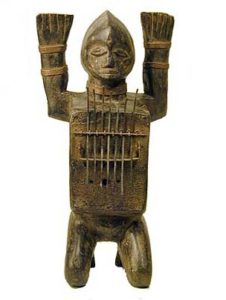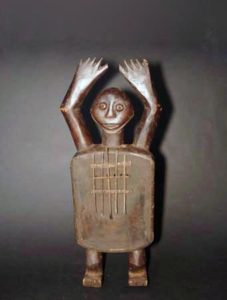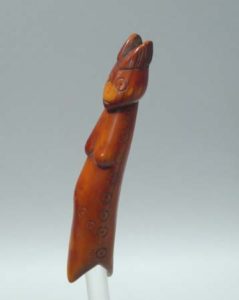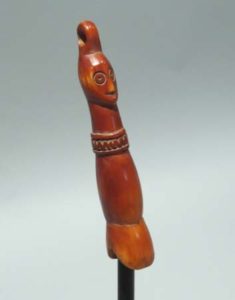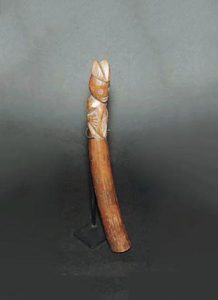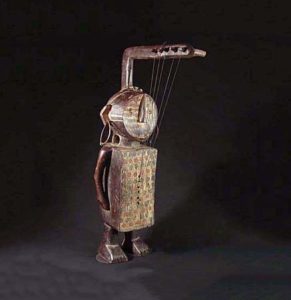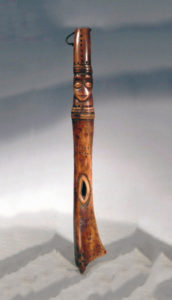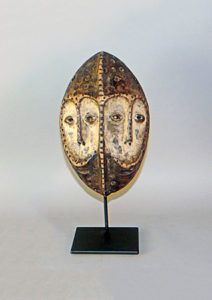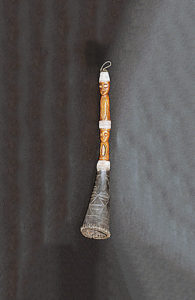The Lega began their long migration from modern day Uganda settling on the west bank of the Lualaba River in the Democratic Republic of Congo (formerly Zaire). They were a warlike people, and those, with whom they came into contact, were compelled to adopt many Lega customs. In the 17th century they attacked the Rwandans dividing and conquering the people who lived in the region. Many cultural traits have been assimilated into the surrounding cultures, and the Lega still dominate the region today.
The position of chief, referred to as the “Kindi,” is held by the oldest member of the clan who must also hold the highest grade within the Bwami society. The function of the Bwami, which is open to both men and women, is to regulate the social and political life of the Lega. Progression through the seven male and four female grades is made possible by the giving of presents and the participation in initiations. Division of labor is gender based and although traditionally they were mostly farmers, raising manioc, bananas, and rice, they have recently turned to panning for gold in alluvial river deposits. There are also iron ore mines in the region which employ local labor. The Bwami society, a political organization that challenges the lineage power structure, requires large payments from those who wish to advance. By joining Bwami, one can also develop an immunity to the doings of must witches in their belief system.
Lega art is exclusively focused on and associated with the Bwami society. Each object has a precise role and function within their ceremonies and rituals and is used only by the initiated. Their artifacts are numerous and are created from a variety of materials. Ivory objects are reserved for the chief, referred to as the Kindi, while wooden objects are used for the second level.
Source:
Baquart, Jean-Baptiste. The Tribal Arts of Africa. New York: Thames and Hudson Inc.

